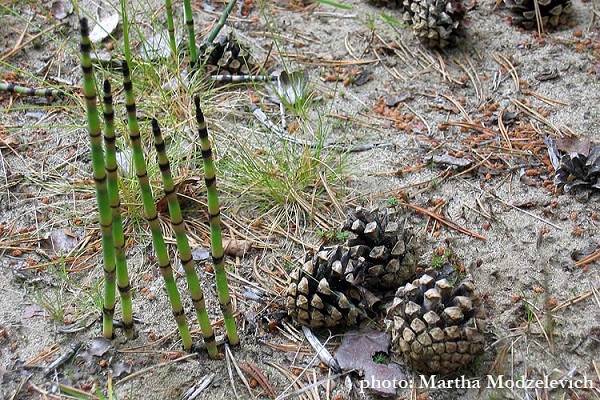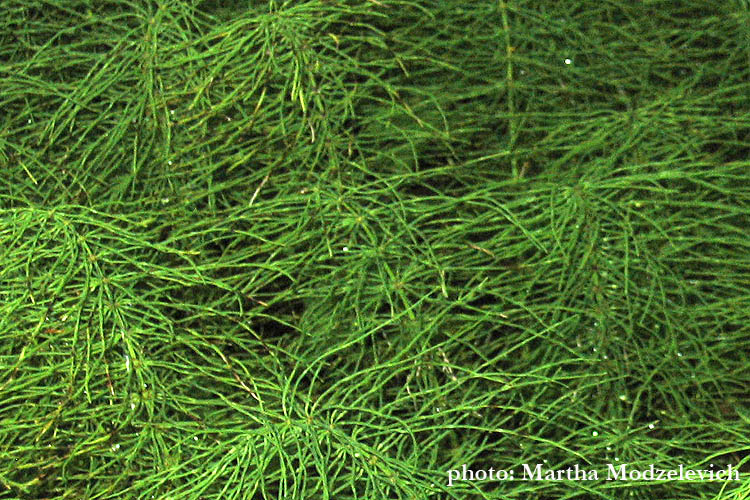
Location: Hammarstrand
| Scientific name: | Equisetum L. | |
| Swedish name: | Fräken | |
| German name: | Schachtelhalme | |
| Nederlandse naam: | Paardenstaart | |
| English name: | Horsetails, PEWTERWORT | |
| Plant Family: | Equisetaceae, Fräkenväxter, Horsetail family |

Location: Hammarstrand |
| Life form: | Herbaceous perennials | |
| Stems: | Stalks arise from rhizomes; green, photosynthetic, hollow, jointed and ridged | |
| Leaves: | Small microphyllous leaves that are arranged in true whorls and the leaves of each whorl are fused together to form a cylindrical sheath around each node | |
| Flowers: | reproduce by means of spores which are borne on cones | |
| Flowering Period: | May-June | |
| Plant communities, Vaxtsamhallen: | Humid Habitats, both on land and in water |

Location: Hammarstrand Derivation of the botanical name: Equisetum from the Latin equis, "horse" and seta, "bristle".
Equisetum is a primitive plant, a descendat of huge trees that lived in the Paleozoic era (542–251 million years ago). It produces two different stalks. One is the fertile "joint-grass", the other is the sterile "horse-tail". The fertile stalk produces a cone-like structure at the top, which is covered with spore-producing scales. The English herbalist John Gerard (1545-1612), said that it was used for scouring pewter and wooden kitchen utensils, and that fletchers and comb makers rubbed and polished their work with it. He added that Dioscorides said that Horsetail, being stamped and put upon a wound, will perfectly cure it, even if the sinews be completely cut in two. Equisetum contains abrasive silica. |